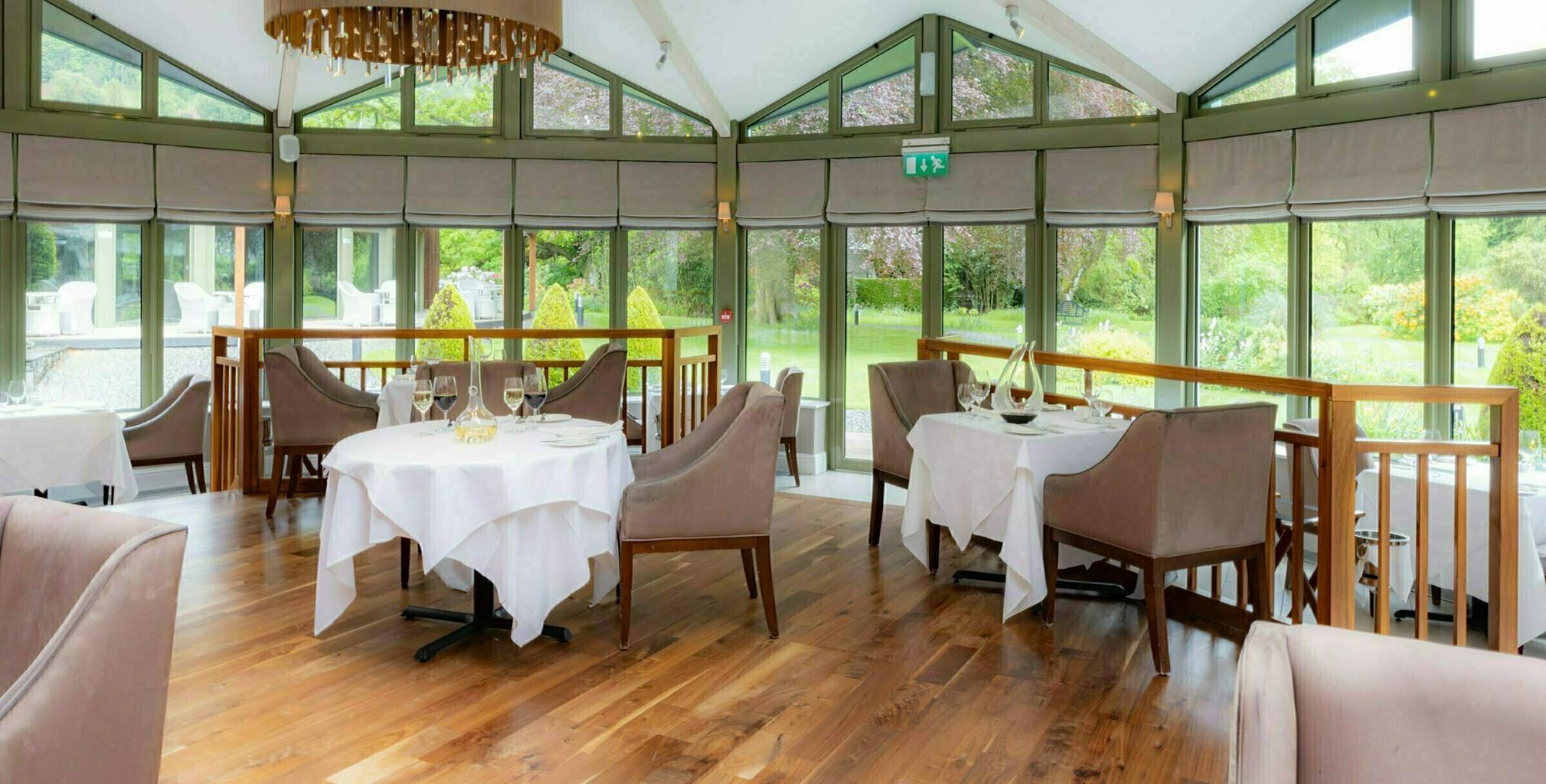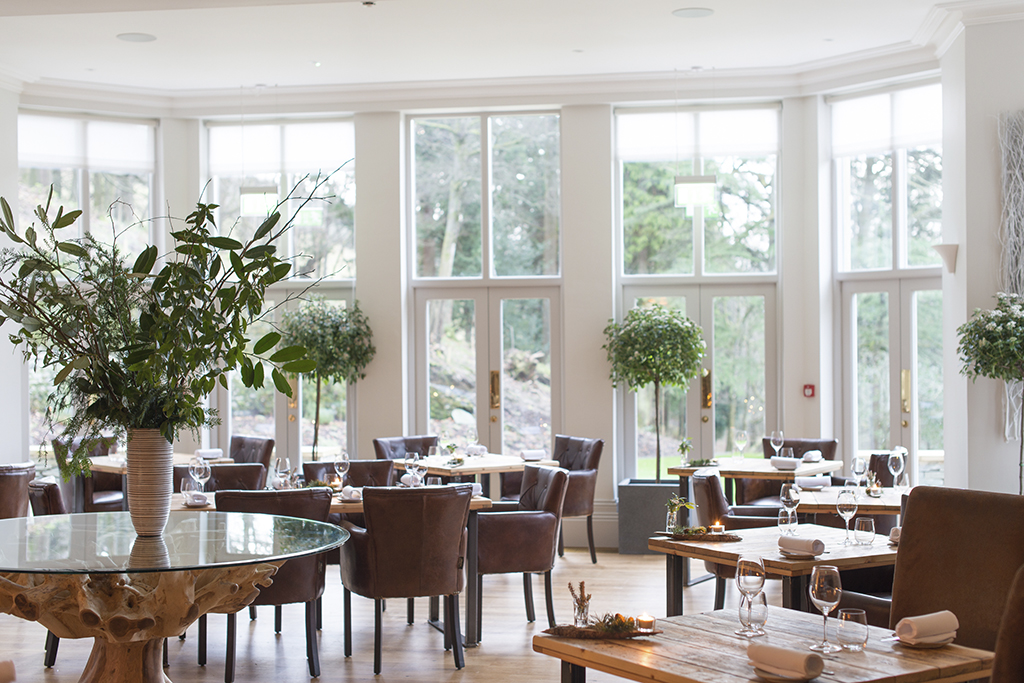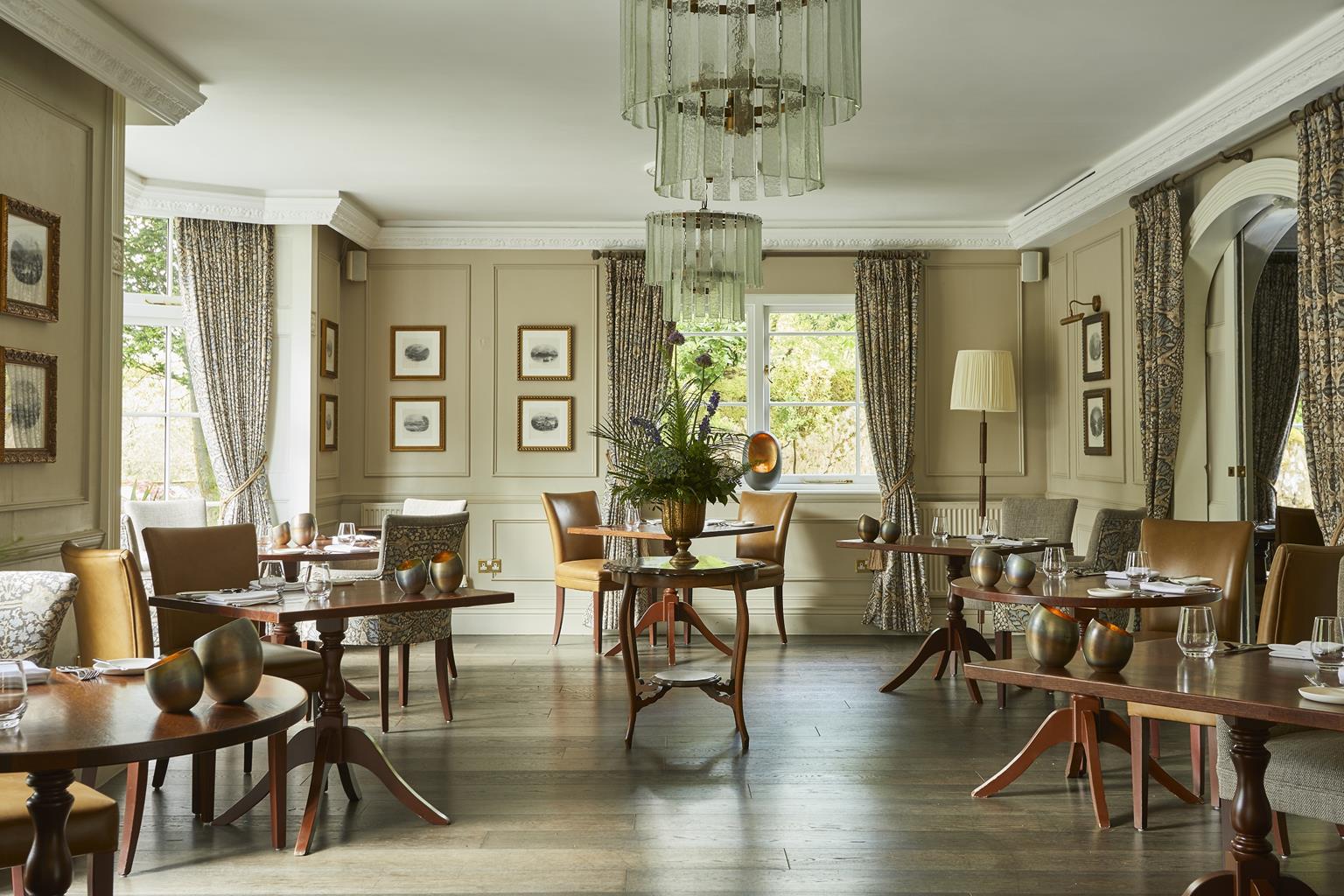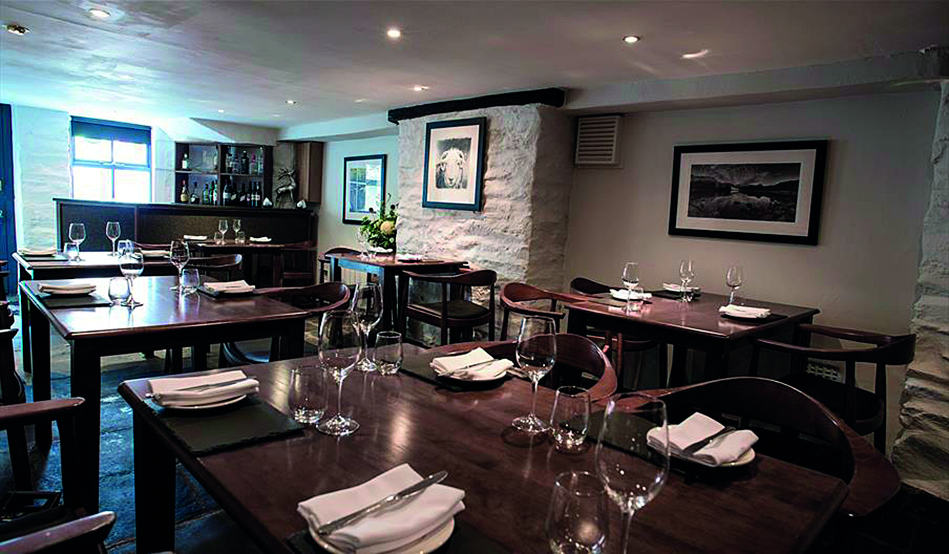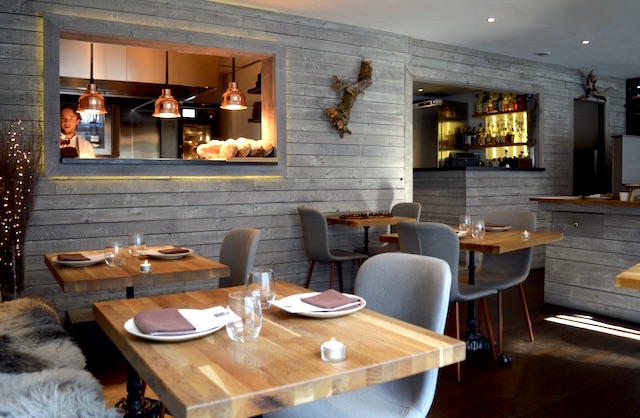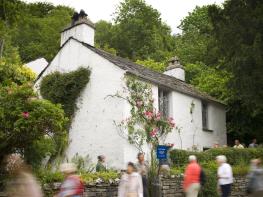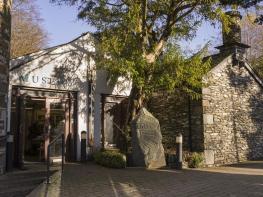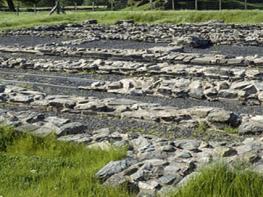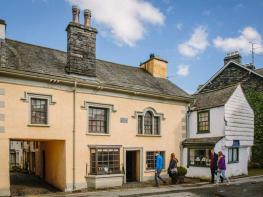A farmhouse built about 500 years ago, The Britannia became an inn during the 19th century. For…
Walking by Elter Water and Loughrigg Tarn

Bluebell woods, a lake, a tarn, a waterfall and Little Loughrigg make this a memorable outing.
4 miles (6.4kms)
About the walk
Although it does include steep sections of ascent and descent, this is not a particularly difficult walk, and there are outstanding views throughout. The little lake of Elter Water and the petite Loughrigg Tarn are among the prettiest stretches of water in the region. The former, really three interconnected basins, was originally named Eltermere, which translates directly from the Old Norse into ‘swan lake’. The swans are still here in abundance; if you eat your lunch sitting on the wooden bench at the foot of the lake, be careful they don’t grab your sandwiches. The views over both lake and tarn, to the reclining lion profile of the Langdale Pikes, are particularly evocative. Each season paints a different picture: golden daffodils by Langdale Beck in early spring; bluebells in Rob Rash woods in May; yellow maple in Elterwater village in October; and a thousand shades of green, everywhere, all summer. The river is dominant throughout the lower stages of the walk. It starts as the Great Langdale Beck, before emerging from the confines of Elter Water as the sedate River Brathay. Ascent then leads to the suspended bowl of Loughrigg Tarn, followed by the open fell freedom of Little Loughrigg. This is very much a walk for all seasons, and should the section through the meadows by the Brathay be flooded, then a simple detour can easily be made onto the road to bypass the problem.
Local gunpowder works
With all the quarrying and mining that once took place in the Lake District, including a little poaching for the pot, there used to be a considerable demand for ‘black powder’ or gunpowder. Elterwater Gunpowder Works, founded in 1824, once filled that demand. The natural water power of Langdale Beck was utilised to drive great grinding wheels or millstones. Prime-quality charcoal came from the local coppices, while saltpetre and sulphur were imported. In the 1890s the works employed around 80 people. Accidental explosions did occur, notably in 1916, when four men were killed. The whole enterprise closed down in 1929. Today the site is occupied by the Langdale Timeshare organisation, with only the massive mill wheels on display to bear witness to times past. While the works were operational, the raw ingredients were brought in and the highly explosive gunpowder taken away by horse and cart. Clydesdales were preferred for their huge strength and considerable intelligence. On workdays they would be harnessed up, and on special occasions they had their manes plaited and ribboned, and were decorated with polished horse brasses. The horses have long gone, but some of their brasses remain fixed to the oak beams in the Brittania Inn.
Walk directions
Pass through a small gate to walk downstream above Great Langdale Beck. Continue into the woods of Rob Rash. A gate leads through the stone wall; the open foot of Elter Water lies to the right. Continue along the path through the meadows above the river. Note that this section can be wet and is prone to occasional flooding. Pass through the gate and enter woods. Pass a footbridge over the river, then pass Skelwith Force waterfall down to the right. Steps and metal bridges lead to a viewing point above the falls. Keep along the path to pass through industrial buildings formerly belonging to Kirkstone Quarry.
Chesters by the River café is on the right as the path becomes a small surfaced road. Continue ahead to meet the A593 by the bridge over the river, where there are picnic benches. Turn left to pass the hotel. At the road junction, cross the Great Langdale road to climb a steep, narrow lane. At a T-junction turn right over a bridge then left on a rocky track, which becomes a narrow path. Joining a track, turn left then fork right, passing in front of cottages. At a junction go left and then through the left-hand one of two gates. Follow the level track to overlook Loughrigg Tarn. Part-way along the tarn, cross a stile over the railings on the left.
Walk down the meadow to traverse just above the tarn, with the water on your left. The footpath swings left to climb a ladder stile over a wall. Follow the grassy track uphill to join the road. Turn left and continue until a surfaced drive leads right, signed ‘Public Footpath Skelwith Bridge’. Pass a small cottage; the track ends at a higher cottage, Crag Head. Go straight ahead on a stony path and in a few paces turn right on a narrow grassy path climbing steeply up the hillside, to gain a level shoulder on Little Loughrigg.
Cross the shoulder and descend the path, keeping right at forks, to meet a stone wall. Descend near the wall to find, in a few hundred yards, a gate into the upper woods of Rob Rash. A steep descent leads down to the road. Go straight across, and descend a track to meet up with the outward route. Bear right to return to Elterwater village.
Additional information
Grassy and stony paths and tracks, surfaced lane, several stiles
Lake, tarn, fields, woods, open fellside, views to fells
Under control at all times; fellside grazed by sheep
OS Explorer OL7 The English Lakes (SE)
National Trust pay-and-display car park at Elterwater village
Above car park in Elterwater village
WALKING IN SAFETY
Read our tips to look after yourself and the environment when following this walk.
Find out more
Also in the area
About the area
Discover Cumbria
Cumbria's rugged yet beautiful landscape is best known for the Lake District National Park that sits within its boundaries. It’s famous for Lake Windermere, England’s largest lake, and Derwent Water, ‘Queen of the English Lakes'. This beautiful countryside once inspired William Wordsworth and his home, Dove Cottage, in Grasmere is a popular museum. Another place of literary pilgrimage is Hill Top, home of Beatrix Potter, located near Windermere. Tom Kitten, Samuel Whiskers and Jemima Puddleduck were all created here.
Much of Cumbria is often overlooked in favour of the Lake Distirct. In the south, the Lune Valley remains as lovely as it was when Turner painted it. The coast is also a secret gem. With its wide cobbled streets, spacious green and views of the Solway Firth, Silloth is a fine Victorian seaside resort. Other towns along this coastline include Whitehaven, Workington and Maryport. Carlisle is well worth a look – once a Roman camp, its red-brick cathedral dates back to the early 12th century and its 11th-century castle was built by William Rufus.
Nearby stays
Restaurants and Pubs
Nearby experiences
Recommended things to do
Why choose Rated Trips?
Your trusted guide to rated places across the UK
The best coverage
Discover more than 15,000 professionally rated places to stay, eat and visit from across the UK and Ireland.
Quality assured
Choose a place to stay safe in the knowledge that it has been expertly assessed by trained assessors.
Plan your next trip
Search by location or the type of place you're visiting to find your next ideal holiday experience.
Travel inspiration
Read our articles, city guides and recommended things to do for inspiration. We're here to help you explore the UK.



